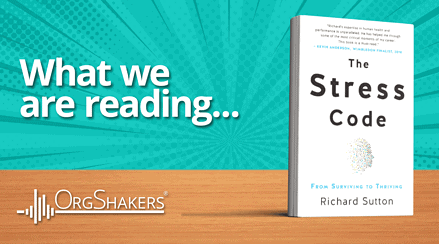Menu

Why US Employers Should Help to Bridge the Maternity Leave Gap
If you cast your employer gaze across the globe you will find that parental leave policies vary dramatically, and one stark reality stands out: American women face some of the most limited protections when it comes to maternity leave.
Unlike the United Kingdom, where mothers can take up to 52 weeks off with a substantial portion paid, American law provides only 12 weeks of unpaid leave under the Family and Medical Leave Act (FMLA), and eligibility is limited to employees at larger companies who have met specific tenure requirements. For many women, this means returning to work before they feel physically or emotionally ready, which can be a real challenge that has noticeable impacts on both family wellbeing and workplace performance.
Despite this, employers have an opportunity to step up. Instead of viewing the legal minimum as the ceiling, businesses can develop practical policies that help employees manage this major life transition…and in turn, benefit from stronger retention, engagement, and morale.
What is the Challenge?
The US Bureau of Labor Statistics reports that only about 27% of private industry workers currently have access to paid family leave. In contrast, most developed economies provide several months of paid maternity leave, which allows parents time to recover and adjust without the pressure of lost income.
This absence of guaranteed paid leave in the US can lead to significant employee turnover, reduced productivity, and challenges in re-engaging employees after time away. For organizations competing for talent, this is not just a social issue, but very much a business one.
What Steps Employers Can Take?
1. Offer Paid Leave Options – even a few weeks of paid leave can make a meaningful difference. Employers can provide full or partial pay, or allow employees to use accrued time off. Many companies are combining short-term disability insurance with paid parental leave to build a more sustainable approach.
2. Create Flexible Return-to-Work Paths – phased returns, hybrid schedules, or part-time arrangements help employees ease back into their roles. This flexibility signals trust and care, which often translates into higher engagement and long-term loyalty.
3. Encourage Shared Parental Leave – including partners in parental leave policies not only supports families but also ensures smoother transitions at home and at work. When both parents can participate in early caregiving, it helps stabilize the employee’s return.
4. Communicate Early and Clearly – HR and managers should proactively guide employees through leave planning. This includes clarifying pay, benefits, and handover expectations. Having a structured process will minimize disruption and ensure coverage while maintaining morale.
5. Provide Post-Leave Support – simple measures such as access to employee assistance programs, wellness check-ins, or practical resources like lactation spaces can make the return experience far less stressful, which helps employees re-engage faster and more effectively.
Paving a Path for the Future
American employers have a unique opportunity to redefine the experience of motherhood in the workplace. Working mothers make up a large swathe of the working population, and by having the right support measures in place, employers will be welcoming back an employee who is in a much better physical and mental space and therefore will be much more engaged and productive.
Not to mention the fact that this will foster a sense of loyalty in these employees, who would be less likely to leave an employer who they know has their best interests in mind.
In a country where maternity leave is limited, proactive employer support can make all the difference. By stepping up, businesses are helping to bridge the gap for women where the law has limited them. If you would like to discuss how we can help implement these strategies for working mothers, please get in touch with us today!



